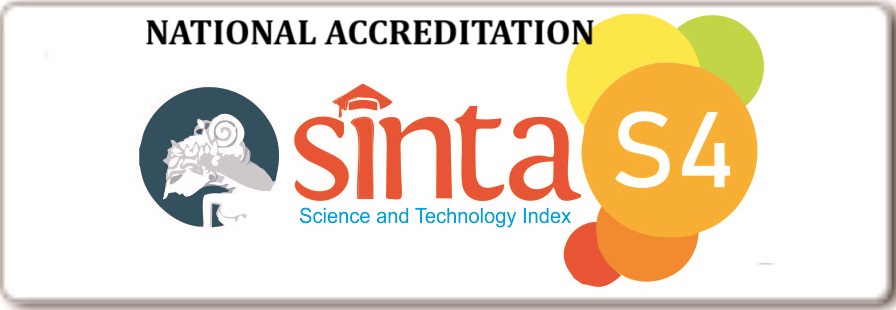THE ROLE OF MICROFINANCE IN ENHANCING ENTREPRENEURIAL GROWTH IN SUB-SAHARAN AFRICA: A COMPARATIVE ANALYSIS OF NIGERIA AND KENYA
DOI:
https://doi.org/10.15575/jb.v1i2.38748Keywords:
Microfinance, Entrepreneurial Growth, Nigeria, Kenya, Comparative Analysis.Abstract
References
Acha, I. A. (2012). Microfinance banking in Nigeria: Problems and prospects. International Journal of Finance and Accounting, 1(5), 106-111. https://doi.org/10.5923/j.ijfa.20120105.04
Agyapong, D., Agyapong, G. K. Q., & Darfor, K. N. (2011). Criteria for assessing small and medium enterprises’ borrowers in Ghana. International Business Research, 4(4), 132-138. https://doi.org/10.5539/ibr.v4n4p132
Aker, J. C., & Mbiti, I. M. (2010). Mobile phones and economic development in Africa. Journal of Economic Perspectives, 24(3), 207-232. https://doi.org/10.1257/jep.24.3.207
Akudugu, M. A. (2012). Estimation of the determinants of credit demand by farmers and supply by rural banks in Ghana’s Upper East Region. Asian Journal of Agriculture and Rural Development, 2(2), 189-200. https://doi.org/10.18488/journal.1005/2012.2.2/1005.2.189.200
Alabi, G., Alabi, J., & Ahiawodzi, A. (2007). Effects of ‘susu’ – A traditional micro-finance mechanism on organized and unorganized micro and small enterprises (MSEs) in Ghana. African Journal of Business Management, 1(8), 201-208.
Alhassan, E., Hoedoafia, M. A., & Braimah, I. (2016). The effects of microcredit on profitability and challenges of women-owned SMEs: Evidence from Northern Ghana. Journal of Entrepreneurship and Business Innovation, 3(1), 29-47. https://doi.org/10.5296/jebi.v3i1.9381
Armendáriz, B., & Labie, M. (2011). The Handbook of Microfinance. World Scientific.
Armendáriz, B., & Morduch, J. (2010). The Economics of Microfinance. MIT Press.
Ashta, A., & Fall, N. S. (2012). Institutional analysis to understand the growth of microfinance institutions in West African economic and monetary union. Corporate Governance: The International Journal of Business in Society, 12(4), 441-459. https://doi.org/10.1108/14720701211267795
Awaworyi Churchill, S., & Mishra, V. (2017). Trust, social networks and subjective wellbeing in China. Social Indicators Research, 132(3), 1053-1072. https://doi.org/10.1007/s11205-016-1344-5
Banerjee, A., Karlan, D., & Zinman, J. (2015). Six randomized evaluations of microcredit: Introduction and further steps. American Economic Journal: Applied Economics, 7(1), 1-21. https://doi.org/10.1257/app.20140287
Bateman, M., & Chang, H. J. (2012). Microfinance and the illusion of development: From hubris to nemesis in thirty years. World Economic Review, 1, 13-36.
Battilana, J., & Dorado, S. (2010). Building sustainable hybrid organizations: The case of commercial microfinance organizations. Academy of Management Journal, 53(6), 1419-1440. https://doi.org/10.5465/amj.2010.57318391
Barth, J. R., Caprio, G., & Levine, R. (2013). Bank regulation and supervision in 180 countries from 1999 to 2011. Journal of Financial Economic Policy, 5(2), 111-219. https://doi.org/10.1108/17576381311329661
Beck, T., & Cull, R. (2014). Small- and medium-sized enterprise finance in Africa. African Development Review, 26(1), 37-49. https://doi.org/10.1111/1467-8268.12065
Beck, T., & Demirgüç-Kunt, A. (2008). Access to finance: An unfinished agenda. The World Bank Economic Review, 22(3), 397-430. https://doi.org/10.1093/wber/lhn021
Beck, T., Demirgüç-Kunt, A., & Peria, M. S. M. (2008). Banking services for everyone? Barriers to bank access and use around the world. The World Bank Economic Review, 22(3), 397-430. https://doi.org/10.1093/wber/lhn020
Beck, T., Maimbo, S. M., Faye, I., & Triki, T. (2011). Financing Africa: Through the crisis and beyond. The World Bank. https://doi.org/10.1596/978-0-8213-8797-9
Beck, T., Pamuk, H., Ramrattan, R., & Uras, B. R. (2018). Payment instruments, finance and development. Journal of Development Economics, 133, 162-186. https://doi.org/10.1016/j.jdeveco.2018.01.007
Beck, T., Senbet, L. W., & Simbanegavi, W. (2015). Financial inclusion and innovation in Africa: An overview. Journal of African Economies, 24(1), i3-i11. https://doi.org/10.1093/jae/eju031
Bongomin, G. O. C., Ntayi, J. M., & Munene, J. C. (2018). Mobile money adoption and usage and financial inclusion: Mediating role of digital consumer protection in Uganda. Journal of African Business, 19(3), 342-364. https://doi.org/10.1080/15228916.2018.1481823
Braun, V., & Clarke, V. (2006). Using thematic analysis in psychology. Qualitative Research in Psychology, 3(2), 77-101. https://doi.org/10.1191/1478088706qp063oa
Brown, M., Jappelli, T., & Pagano, M. (2009). Information sharing and credit: Firm-level evidence from transition countries. Journal of Financial Intermediation, 18(2), 151-172. https://doi.org/10.1016/j.jfi.2008.04.002
Bruton, G. D., Khavul, S., & Chavez, H. (2011). Microlending in emerging economies: Building a new line of inquiry from the ground up. Journal of International Business Studies, 42(5), 718-739. https://doi.org/10.1057/jibs.2010.58
Chliova, M., Brinckmann, J., & Rosenbusch, N. (2015). Is microcredit a blessing for the poor? A meta-analysis examining development outcomes and contextual considerations. Journal of Business Venturing, 30(3), 467-487. https://doi.org/10.1016/j.jbusvent.2014.10.003
Christen, R. P., Lyman, T. R., & Rosenberg, R. (2003). Microfinance Consensus Guidelines: Guiding Principles on Regulation and Supervision of Microfinance. CGAP. https://doi.org/10.1596/0-8213-5417-9
Creswell, J. W. (2014). Research Design: Qualitative, Quantitative, and Mixed Methods Approaches. Sage publications.
Cull, R., Demirgüç-Kunt, A., & Morduch, J. (2009). Microfinance meets the market. Journal of Economic Perspectives, 23(1), 167-192. https://doi.org/10.1257/jep.23.1.167
Cull, R., Demirgüç-Kunt, A., & Morduch, J. (2018). The microfinance business model: Enduring subsidy and modest profit. World Bank Economic Review, 32(2), 221-244. https://doi.org/10.1093/wber/lhw016
Cull, R., & Morduch, J. (2017). Microfinance and economic development. World Bank Policy Research Working Paper, (8252). https://doi.org/10.1596/1813-9450-8252
Demombynes, G., & Thegeya, A. (2012). Kenya’s mobile revolution and the promise of mobile savings. World Bank Policy Research Working Paper, (5988). https://doi.org/10.1596/1813-9450-5988
D’Espallier, B., Guerin, I., & Mersland, R. (2013). Women and repayment in microfinance: A global analysis. World Development, 39(5), 758-772. https://doi.org/10.1016/j.worlddev.2010.10.008
Duflo, E., & Banerjee, A. (2011). Poor Economics: A Radical Rethinking of the Way to Fight Global Poverty. PublicAffairs.
Dupas, P., Karlan, D., Robinson, J., & Ubfal, D. (2018). Banking the unbanked? Evidence from three countries. American Economic Journal: Applied Economics, 10(2), 257-297. https://doi.org/10.1257/app.20160597
Duvendack, M., Palmer-Jones, R., Copestake, J. G., Hooper, L., Loke, Y., & Rao, N. (2011). What is the evidence of the impact of microfinance on the well-being of poor people? EPPI-Centre, Social Science Research Unit, Institute of Education, University of London.
Fletschner, D., & Kenney, L. (2011). Rural women’s access to financial services: Credit, savings, and insurance. ESA Working Paper No. 11-07. Food and Agriculture Organization of the United Nations. https://doi.org/10.2139/ssrn.1825007
Gerring, J. (2007). Case Study Research: Principles and Practices. Cambridge University Press.
Giné, X., & Mansuri, G. (2014). Money or ideas? A field experiment on constraints to entrepreneurship in rural Pakistan. World Bank Policy Research Working Paper, (6959). https://doi.org/10.1596/1813-9450-6959
Guérin, I., Morvant-Roux, S., & Villarreal, M. (2013). Microfinance, Debt and Over-Indebtedness: Juggling with Money. Routledge.
Hair, J. F., Black, W. C., Babin, B. J., Anderson, R. E., & Tatham, R. L. (2010). Multivariate Data Analysis (7th ed.). Pearson.
Helms, B. (2006). Access for All: Building Inclusive Financial Systems. CGAP/World Bank. https://doi.org/10.1596/978-0-8213-6502-0
Hermes, N., & Lensink, R. (2011). Microfinance: Its impact, outreach, and sustainability. World Development, 39(6), 875-881. https://doi.org/10.1016/j.worlddev.2009.10.021
Honohan, P. (2008). Cross-country variation in household access to financial services. World Bank.
Honohan, P., & King, M. (2012). Cause and effect of financial access: Cross-country evidence from the FinScope surveys. World Bank Economic Review, 26(3), 379-405. https://doi.org/10.1093/wber/lhr045
Jack, W., & Suri, T. (2014). Risk sharing and transactions costs: Evidence from Kenya's mobile money revolution. American Economic Review, 104(1), 183-223. https://doi.org/10.1257/aer.104.1.183
Karlan, D., & Morduch, J. (2010). Access to finance. In D. Rodrik & M. Rosenzweig (Eds.), Handbook of Development Economics (Vol. 5, pp. 4703-4784). North-Holland.
Karlan, D., & Zinman, J. (2011). Microcredit in theory and practice: Using randomized credit scoring for impact evaluation. Science, 332(6035), 1278-1284. https://doi.org/10.1126/science.1200138
Khandker, S. R., & Samad, H. A. (2014). Dynamic effects of microcredit in Bangladesh. World Bank Policy Research Working Paper, (6821). https://doi.org/10.1596/1813-9450-6821
Kvale, S., & Brinkmann, S. (2009). InterViews: Learning the Craft of Qualitative Research Interviewing. Sage Publications.
Ledgerwood, J. (2013). The New Microfinance Handbook: A Financial Market System Perspective. World Bank Publications.
Ledgerwood, J., Earne, J., & Nelson, C. (2013). The New Microfinance Handbook: A Financial Market System Perspective. World Bank Publications. https://doi.org/10.1596/978-0-8213-8927-0
Lusardi, A., & Tufano, P. (2015). Debt literacy, financial experiences, and overindebtedness. Journal of Pension Economics and Finance, 14(4), 332-368. https://doi.org/10.1017/S1474747215000232
Mair, J., & Marti, I. (2009). Entrepreneurship in and around institutional voids: A case study from Bangladesh. Journal of Business Venturing, 24(5), 419-435. https://doi.org/10.1016/j.jbusvent.2008.04.007
Maxwell, J. A. (2013). Qualitative Research Design: An Interactive Approach. Sage Publications.
Mazer, R., & Rowan, P. (2016). Competition in mobile financial services: Lessons from Kenya and Tanzania. Consultative Group to Assist the Poor (CGAP). https://doi.org/10.2139/ssrn.3090853
Mbiti, I., & Weil, D. N. (2011). Mobile banking: The impact of M-Pesa in Kenya. National Bureau of Economic Research Working Paper, 17129. https://doi.org/10.3386/w17129
Meagher, P. (2015). Microfinance regulation in Nigeria: Implications for sustainability and outreach. Development in Practice, 25(2), 247-260. https://doi.org/10.1080/09614524.2015.1007583
Morawczynski, O. (2009). Exploring the usage and impact of transformational mobile financial services: The case of M-Pesa in Kenya. Journal of Eastern African Studies, 3(3), 509-525. https://doi.org/10.1080/17531050903273768
Morduch, J. (1999). The microfinance promise. Journal of Economic Literature, 37(4), 1569-1614. https://doi.org/10.1257/jel.37.4.1569
Mwobobia, F. M. (2012). The challenges facing small-scale women entrepreneurs: A case of Kenya. International Journal of Business Administration, 3(2), 112-121. https://doi.org/10.5430/ijba.v3n2p112
Nwanyanwu, L. A. (2011). Micro finance in Nigeria: Problems and prospects. African Research Review, 5(5), 87-103. https://doi.org/10.4314/afrrev.v5i5.7
Patton, M. Q. (2002). Qualitative Research and Evaluation Methods (3rd ed.). Sage Publications.
Odell, K. (2010). Measuring the impact of microfinance: Taking stock of what we know. Grameen Foundation Publication.
Oji, H. (2015). Mobile banking adoption and diffusion: Enablers and inhibitors. Mediterranean Journal of Social Sciences, 6(4), 395-403. https://doi.org/10.5901/mjss.2015.v6n4s2p395
Oseni, G., & Pollitt, M. G. (2013). Institutional reforms, regulation and productivity performance: Evidence from Nigerian electricity distribution companies. Energy Policy, 62, 443-454. https://doi.org/10.1016/j.enpol.2013.07.074
Pénicaud, C., & Katakam, A. (2014). State of the industry 2013: Mobile financial services for the unbanked. GSMA. https://doi.org/10.2139/ssrn.2765265
Roy, A., & Goswami, S. (2013). Impact of microfinance on small scale enterprises in India: An empirical study. International Journal of Management Research and Business Strategy, 2(3), 36-46.
Silverman, D. (2013). Doing Qualitative Research (4th ed.). Sage Publications.
Stein, P., Randhawa, B., & Bilandzic, N. (2011). Toward universal access: Addressing the global challenge of financial inclusion. World Bank. https://doi.org/10.1596/1813-9450-6652
Suri, T. (2017). Mobile money. Annual Review of Economics, 9, 497-520. https://doi.org/10.1146/annurev-economics-063016-103638
Triki, T., & Faye, I. (2013). Financial Inclusion in Africa. African Development Bank. https://doi.org/10.1093/acprof:oso/9780199681932.001.0001
Wyman, O. (2017). Accelerating financial inclusion in Southeast Asia with digital finance. International Finance Corporation (IFC). https://doi.org/10.1596/28734
Xu, L., & Zia, B. (2012). Financial literacy around the world: An overview of the evidence with practical suggestions for the way forward. World Bank Policy Research Working Paper, (6107). https://doi.org/10.1596/1813-9450-6107
Yin, R. K. (2018). Case Study Research and Applications: Design and Methods. Sage Publications.
Downloads
Published
How to Cite
Issue
Section
Citation Check
License

This work is licensed under a Creative Commons Attribution-ShareAlike 4.0 International License.
















